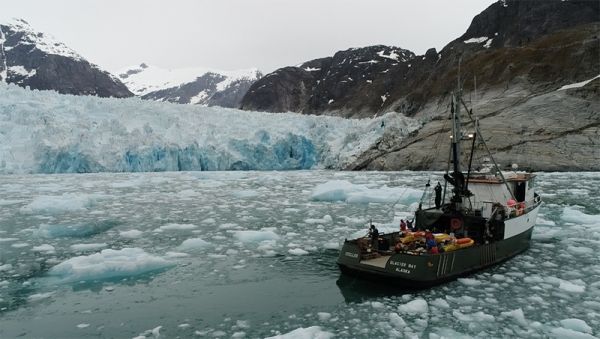Working in ice-clogged seawater in small chartered boats, a University of Oregon-led research team successfully used sonar to scan Alaska’s LeConte Glacier in the first field tests of a long-used theory on melting that occurs under glaciers.
The theory, used in modeling to project climate-driven sea level rise, was shot down in its first real-world test and may need to be revised.
“What we found at this one location matters because many simulations of sea level rise and of iceberg melt all rely on this theory," said the study's lead Dave Sutherland, an oceanographer in the UO’s Department of Earth Sciences. "So our findings throw this theory into question.”
Reporting in the July 26 issue of the journal Science, the team concluded that tidewater glaciers — those that empty from land valleys into ocean water — are potentially melting at two orders of magnitude, or some 100 times, faster than predicted.
Read more at University of Oregon
Photo: UO-led research team works on board the MV Steller in front of Alaska’s LeConte Glacier (Photo courtesy of David Sutherland)


